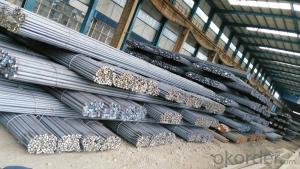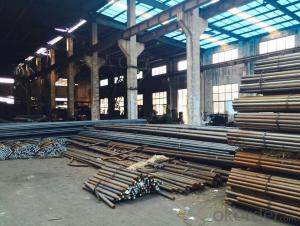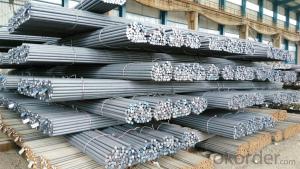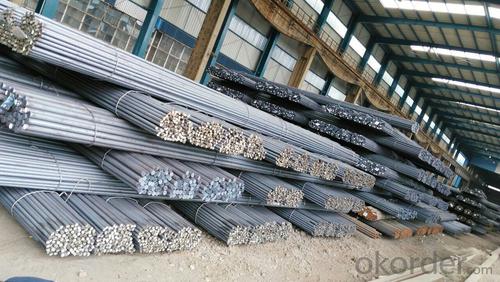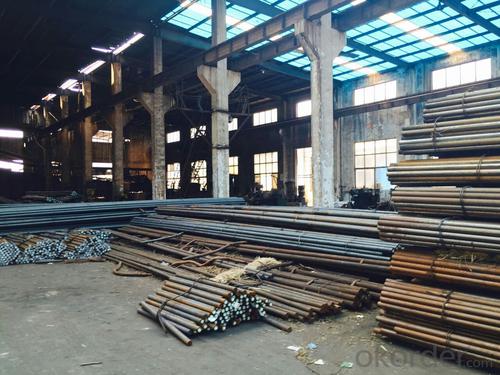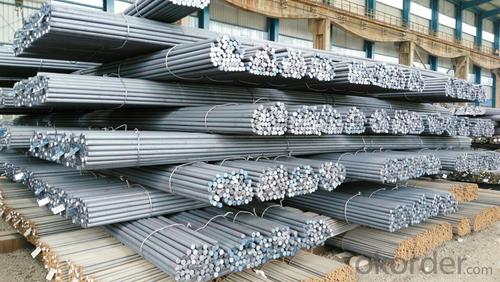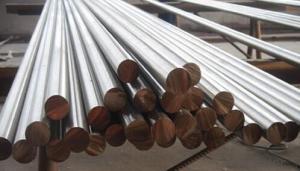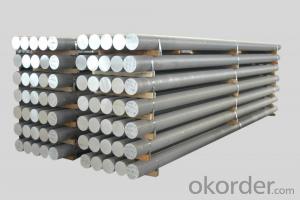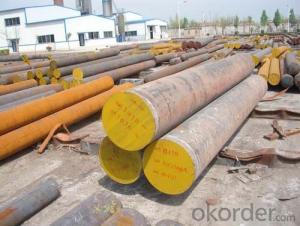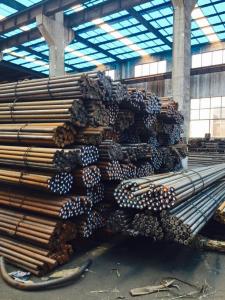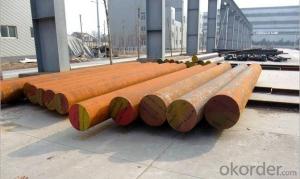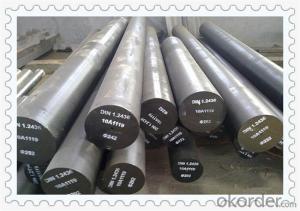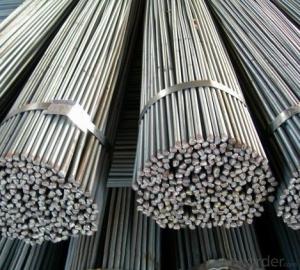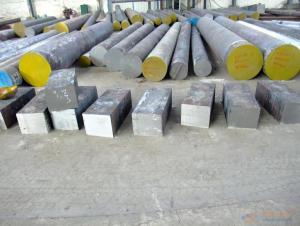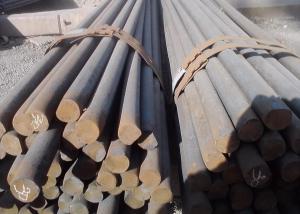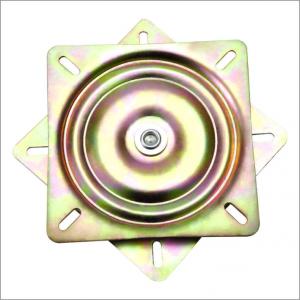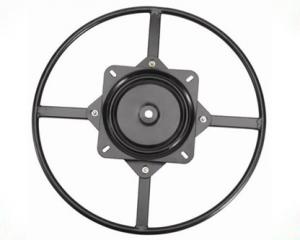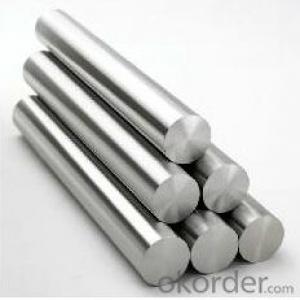Carbon C50 Steel Round Bars Low Carbon Bar
- Loading Port:
- Tianjin
- Payment Terms:
- TT OR LC
- Min Order Qty:
- 25 m.t.
- Supply Capability:
- 50000 m.t./month
OKorder Service Pledge
OKorder Financial Service
You Might Also Like
Specification
Carbon C50 Steel Round Bars Low Carbon Bar
Product details:
Name:Carbon C50 Steel Round Bars Low Carbon Bar
Place of Origin:Liaoning,China Brand Name:Dongbei Tegang
Shape:round bar Material: Alloy Structural Steel
Steel Grade: AISI 1050/JIS S50C/DIN C50/GB 50
Size:Diameter:16mm~300mm
Application:used in making high strengthened and wear resistant parts that works under high pressure, like axle, spring ring, axletree, cam, and steel sling etc.
Chemical Composition:
C | Si | Mn | Cr | Ni | Cu | P | S |
0.47-0.53 | 0.17-0.37 | 0.50-0.80 | ≤0.25 | ≤0.30 | ≤0.35 | ≤0.035 | ≤0.035 |
Characteristics:
- High hardness, strength and toughness.
- Poor plasticity during cold deformation.
- Medium machinability.
- Poor weldability.
- Poor hardenability.
- Cracks is often caused during water quenching process.
- Large parts should be in normalizing treatment.
Application:
S50C structural carbon steel bar /1050 /50/C50 can be used to be manufactured roller, shaft, tyre, spring ring, damping spring, clutch and steel wire rope, etc.
Product Show:
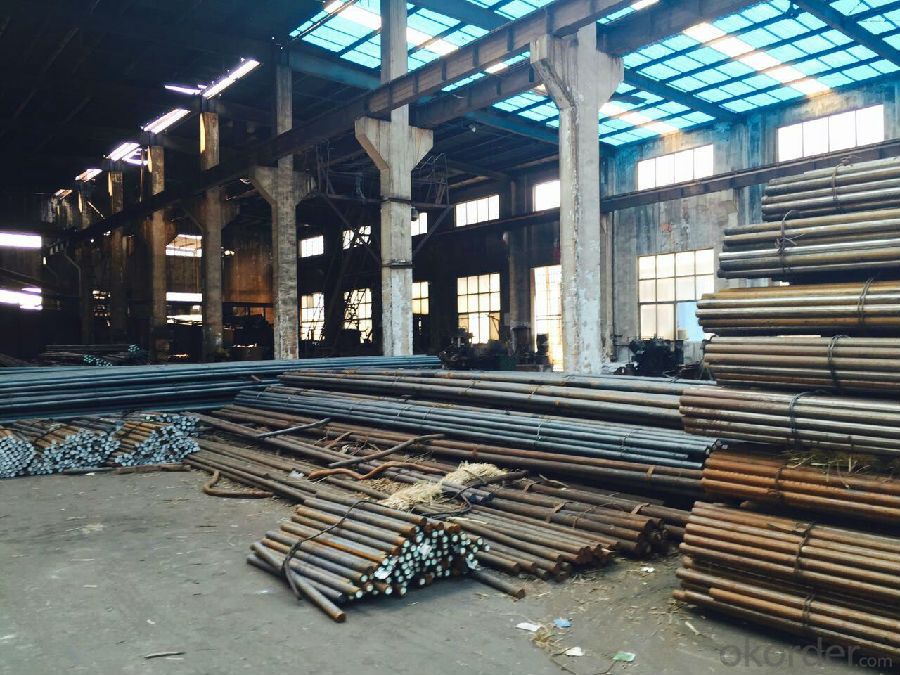
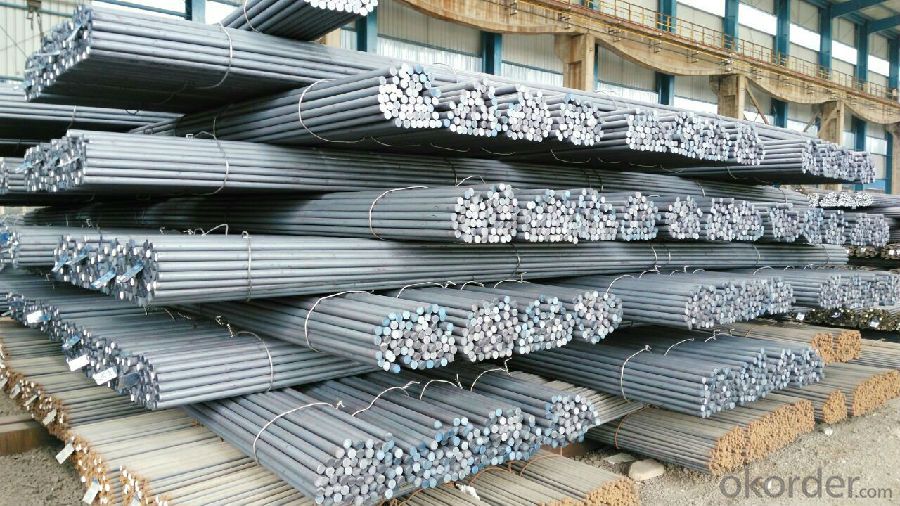
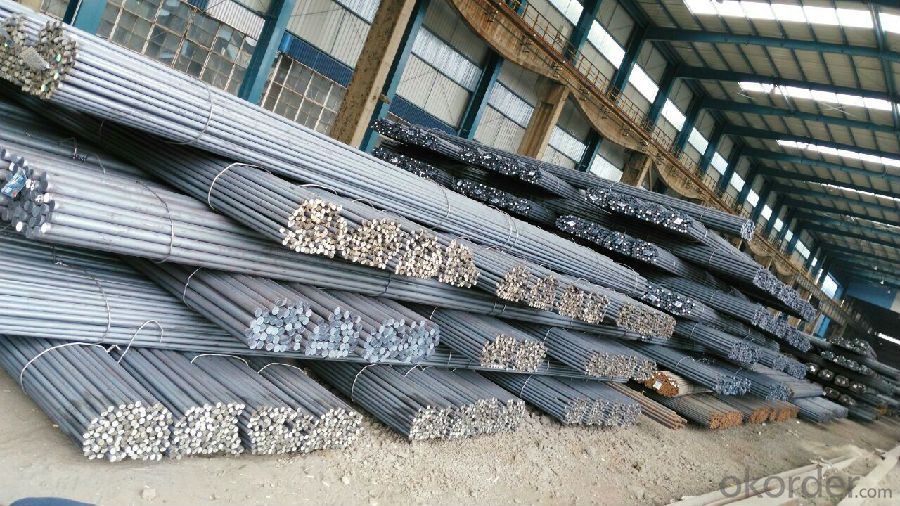
- Q: How does special steel contribute to the automotive emission reduction?
- Special steel contributes to automotive emission reduction in several ways. Firstly, special steel can be used in the manufacturing of lightweight components, such as body frames and engine parts. These lightweight components help reduce the overall weight of the vehicle, leading to improved fuel efficiency and lower emissions. Additionally, special steel can be utilized in the construction of exhaust systems, which are designed to effectively reduce harmful emissions. Special steel's high strength and corrosion resistance properties make it an ideal material for these components, ensuring their durability and effectiveness in reducing emissions. Overall, the use of special steel in the automotive industry plays a significant role in achieving emission reduction targets and promoting a more sustainable future.
- Q: What are the properties of free-cutting steel?
- Free-cutting steel is a type of steel that is specifically designed to enhance machinability, making it easier to cut and shape with minimal effort. It possesses certain properties such as high sulfur content, which promotes the formation of manganese sulfide inclusions, improving chip formation during machining. It also typically contains elements like phosphorus, lead, or bismuth, which act as lubricants and reduce friction during cutting operations. Additionally, free-cutting steel has excellent surface finish, good dimensional accuracy, and high production efficiency, making it widely used in industries where machining speed and efficiency are crucial.
- Q: What are the applications of special steel in the marine sector?
- Special steel, also known as marine grade steel, offers a wide range of applications in the marine sector. One of the key uses of special steel in this industry is for shipbuilding. Special steel is highly resistant to corrosion, making it ideal for the construction of ships and other marine vessels that are constantly exposed to harsh weather conditions and saltwater. Another significant application of special steel in the marine sector is for offshore structures. Offshore platforms, such as oil rigs and wind turbines, require materials that can withstand the harsh marine environment, including corrosion, high pressure, and extreme temperatures. Special steel is known for its exceptional strength and durability, making it a preferred choice for these structures. Additionally, special steel is also used in the manufacturing of marine equipment and components. For example, propeller shafts, anchor chains, and underwater pipelines are often made from special steel due to its excellent mechanical properties and resistance to corrosion. Special steel is also used in the production of marine engines, ensuring reliable performance and longevity in marine applications. Furthermore, special steel is utilized in the construction of port infrastructure, such as piers, docks, and harbor structures. These structures need to withstand the constant exposure to sea water, heavy loads, and dynamic forces, making special steel an ideal material choice for their construction. In conclusion, the applications of special steel in the marine sector are numerous and vital. Its corrosion resistance, strength, and durability make it an essential material for shipbuilding, offshore structures, marine equipment, and port infrastructure. The utilization of special steel ensures the longevity and reliability of marine assets while operating in harsh marine environments.
- Q: What are the specific requirements for special steel used in the textile machinery industry?
- The specific requirements for special steel used in the textile machinery industry include high strength and durability to withstand the high-speed operations and repetitive movements of the machinery. The steel should also possess excellent wear resistance to prevent premature wear and tear. Additionally, it should have good corrosion resistance to withstand exposure to moisture and chemicals commonly found in textile processing. Lastly, the steel should exhibit good heat resistance to maintain its structural integrity even under high temperatures generated during the production process.
- Q: How does special steel contribute to the fatigue resistance of products?
- The exceptional fatigue resistance of products is attributed to the unique properties and manufacturing processes of special steel. Firstly, special steel is engineered and designed to possess enhanced strength and durability, resulting in high resistance against fatigue. This is achieved by incorporating alloying elements such as chromium, nickel, molybdenum, and vanadium, which enhance the material's ability to withstand cyclic loading and stress. Furthermore, rigorous heat treatment processes, including quenching and tempering, are employed to further improve the fatigue resistance of special steel. These processes refine the microstructure of the material, leading to a more uniform and fine-grained product. Consequently, the steel's ability to resist crack initiation and propagation, which are critical factors in fatigue failure, is significantly enhanced. Moreover, specialized surface treatments like shot peening or nitriding are often applied to special steel. These treatments introduce compressive residual stresses on the material's surface, acting as a barrier against crack formation and growth. This significantly boosts the fatigue resistance of the product. Additionally, special steel can be manufactured with specific grain orientations using directional solidification techniques. This allows for the alignment of grains along the primary loading direction, reducing the likelihood of crack initiation at grain boundaries and further improving the material's fatigue performance. In conclusion, the exceptional fatigue resistance of special steel is a result of its unique properties and manufacturing processes. The combination of enhanced strength, refined microstructure, specialized surface treatments, and tailored grain orientations make special steel the preferred choice in industries where fatigue failure is a concern. This ensures prolonged lifespan and reliability of products.
- Q: What are the requirements for special steel used in mining equipment?
- Special steel used in mining equipment needs to possess certain key requirements. Firstly, it must have high strength and toughness to withstand the harsh and demanding conditions present in mining operations. It should also exhibit excellent wear resistance to endure the abrasive nature of rocks and minerals. Additionally, corrosion resistance is crucial to prevent the steel from deteriorating due to exposure to water, chemicals, and other corrosive substances commonly found in mining environments. Finally, the special steel used in mining equipment should be capable of maintaining its mechanical properties at elevated temperatures, as mining processes often involve high heat generation. Overall, the requirements for special steel in mining equipment revolve around durability, wear resistance, corrosion resistance, and heat resistance.
- Q: How does special steel contribute to improving product safety?
- Special steel contributes to improving product safety in several ways. Firstly, special steel is known for its exceptional strength and durability, which enhances the structural integrity of various products. This ensures that they can withstand heavy loads, extreme temperatures, and other challenging conditions without compromising safety. Secondly, special steel often possesses excellent corrosion resistance, reducing the risk of product failure due to rust or degradation over time. Additionally, certain types of special steel offer high impact resistance and resistance to wear and tear, making products more resistant to damage and increasing their lifespan. Ultimately, by incorporating special steel into the manufacturing process, products can be made safer, more reliable, and longer-lasting for the benefit of consumers.
- Q: What are the applications of special steel in the aerospace industry?
- Special steel has numerous applications in the aerospace industry due to its unique properties. It is extensively used in the manufacturing of aircraft components such as engine parts, landing gears, and structural elements. Special steel offers high strength, excellent corrosion resistance, and exceptional heat resistance, making it ideal for withstanding extreme conditions experienced during flight. Additionally, its lightweight nature helps reduce the overall weight of the aircraft, leading to improved fuel efficiency and performance. Overall, special steel plays a crucial role in enhancing the safety, durability, and efficiency of aerospace equipment.
- Q: What are the challenges in welding special steel alloys?
- Welding special steel alloys poses several challenges due to their unique properties and composition. Some of the main challenges in welding special steel alloys include: 1. High melting point: Special steel alloys often have higher melting points compared to regular steel, which requires higher heat input during the welding process. This can result in difficulties in achieving proper fusion and may require specialized welding equipment and techniques. 2. Thermal expansion mismatch: Special steel alloys may have different coefficients of thermal expansion compared to the base metal or other materials being joined. This can lead to the formation of stress and distortion during welding, which can affect the structural integrity of the welded joints. 3. Sensitivity to heat: Certain special steel alloys are more susceptible to heat-affected zone (HAZ) cracking and other forms of weld defects. The high heat input during welding can cause the formation of brittle phases or precipitates, leading to reduced mechanical properties and potential weld failures. 4. Metallurgical changes: Welding special steel alloys can result in significant metallurgical changes in the base metal and the heat-affected zone. These changes include the formation of new microstructures, changes in hardness, and variations in the chemical composition. These alterations can impact the overall performance and properties of the welded joints. 5. Pre-weld and post-weld treatments: Special steel alloys often require specific pre-weld and post-weld treatments to minimize the risk of weld defects and optimize the properties of the welded joints. These treatments may include preheating, post-weld heat treatment, or the use of specialized filler metals to ensure proper weld integrity. 6. Limited availability of consumables: Special steel alloys may have limited availability of suitable consumables, such as filler metals and shielding gases, which are essential for achieving quality welds. The lack of appropriate consumables can make it challenging to find compatible materials that can provide adequate strength and corrosion resistance in the welded joints. To overcome these challenges, it is crucial to have a thorough understanding of the specific properties and requirements of the special steel alloy being welded. Proper welding techniques, including heat control, filler material selection, and post-weld treatments, should be employed to ensure high-quality welds with optimal mechanical properties and structural integrity. Additionally, collaboration with material suppliers, welding experts, and adherence to industry standards and guidelines can help address the challenges associated with welding special steel alloys effectively.
- Q: What are the requirements for special steel used in marine applications?
- In order to ensure durability and performance in harsh marine environments, special steel used in marine applications must satisfy various specific criteria. These criteria encompass the following: 1. Corrosion resistance: To prevent degradation and maintain its structural integrity over time, special steel utilized in marine applications must possess a high resistance to corrosion, as it is exposed to saltwater in marine environments. 2. Strength and toughness: Steel employed in marine applications must exhibit adequate strength and toughness to withstand the dynamic forces and impacts encountered at sea. It must be capable of enduring heavy loads, extreme temperatures, and the impact of waves or collisions. 3. Weldability: Optimal weldability is a requirement for special steel used in marine applications, as it facilitates the construction and repair of marine structures. This characteristic ensures that the steel can be effortlessly joined without compromising its structural integrity. 4. Fatigue resistance: Special steel employed in marine applications must possess exceptional fatigue resistance to withstand the constant cyclic loading associated with wave motions, currents, and operational conditions. Failure to address this requirement can result in fatigue failure. 5. Low-temperature toughness: Due to the involvement of marine applications in cold climates or icy waters, special steel used in these scenarios must maintain its toughness and ductility even at low temperatures. This characteristic is pivotal in preventing brittle fracture and ensuring safety. 6. Fire resistance: High fire resistance is of utmost importance in marine applications. Therefore, special steel utilized in marine structures should possess a high level of fire resistance to prevent structural collapse and restrict the spread of fire. 7. Easy maintenance: Ongoing exposure to harsh environmental conditions necessitates that special steel used in marine applications be easy to maintain and repair. This ensures prolonged performance and minimizes downtime. To fulfill these requirements, special steel for marine applications frequently undergoes alloying with specific elements such as chromium, nickel, and molybdenum. This enhances corrosion resistance, strength, and toughness. Furthermore, advanced manufacturing processes and quality control measures are implemented to guarantee the highest standards of quality and performance in marine applications.
Send your message to us
Carbon C50 Steel Round Bars Low Carbon Bar
- Loading Port:
- Tianjin
- Payment Terms:
- TT OR LC
- Min Order Qty:
- 25 m.t.
- Supply Capability:
- 50000 m.t./month
OKorder Service Pledge
OKorder Financial Service
Similar products
Hot products
Hot Searches
Related keywords
